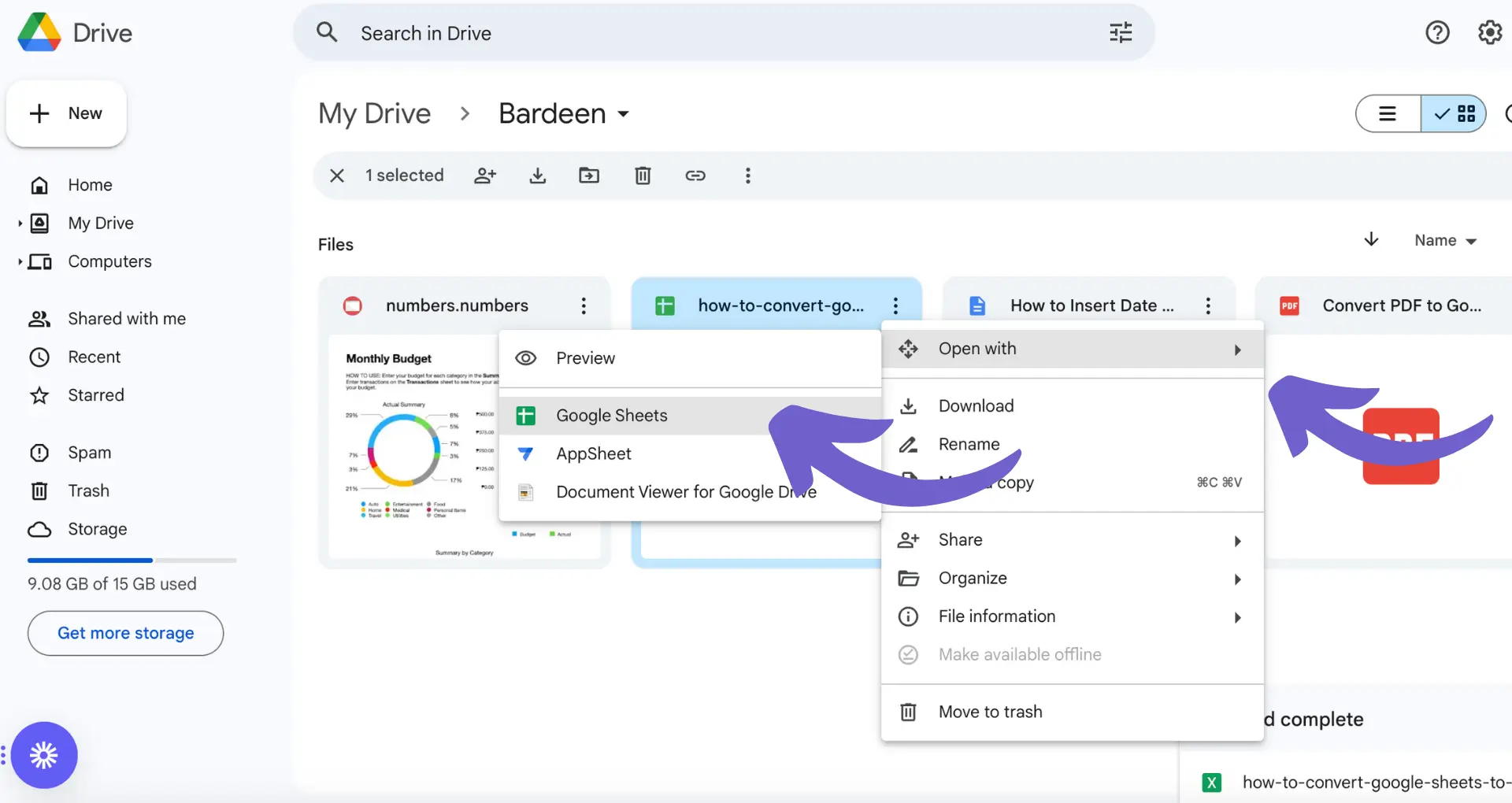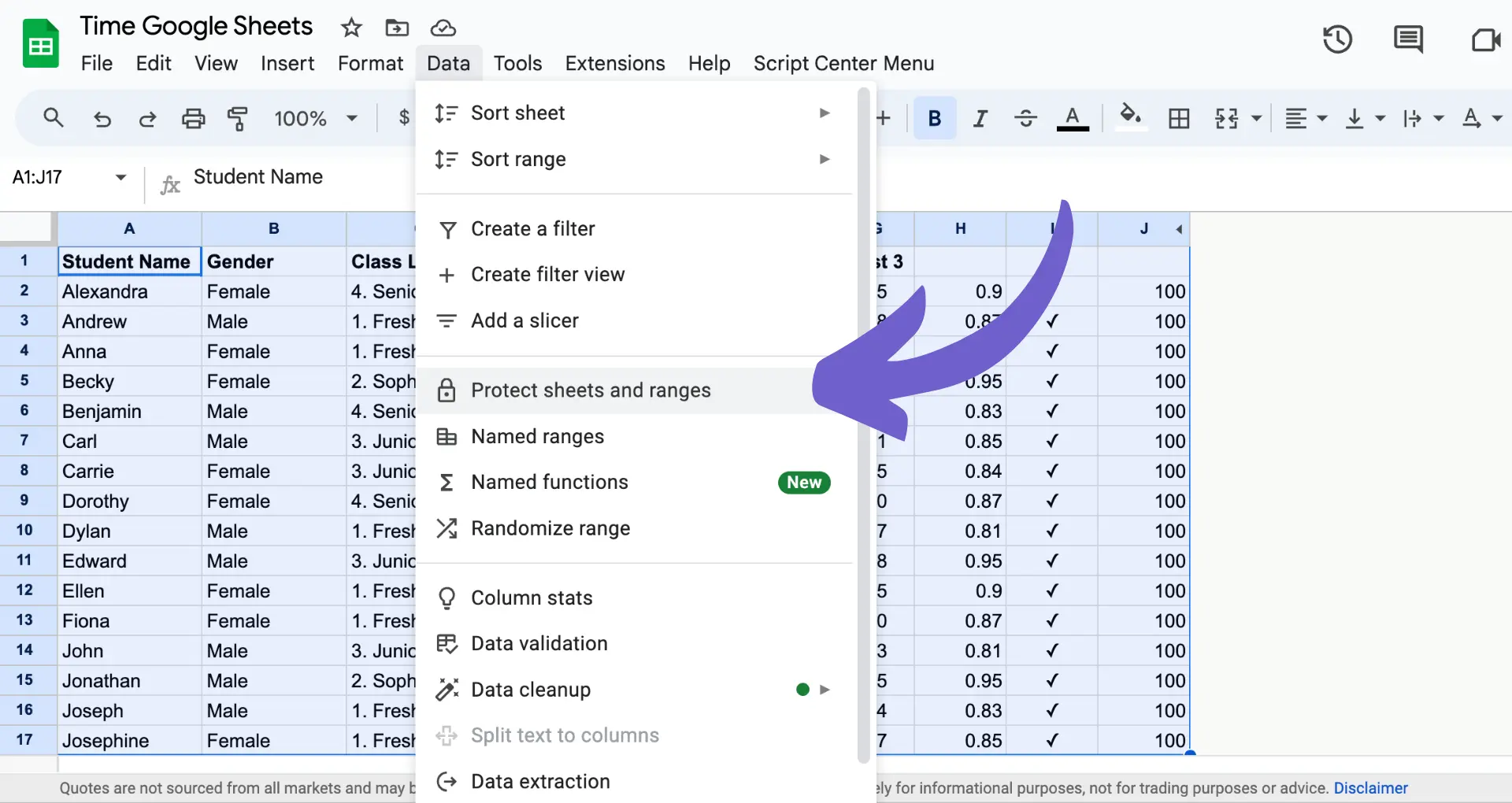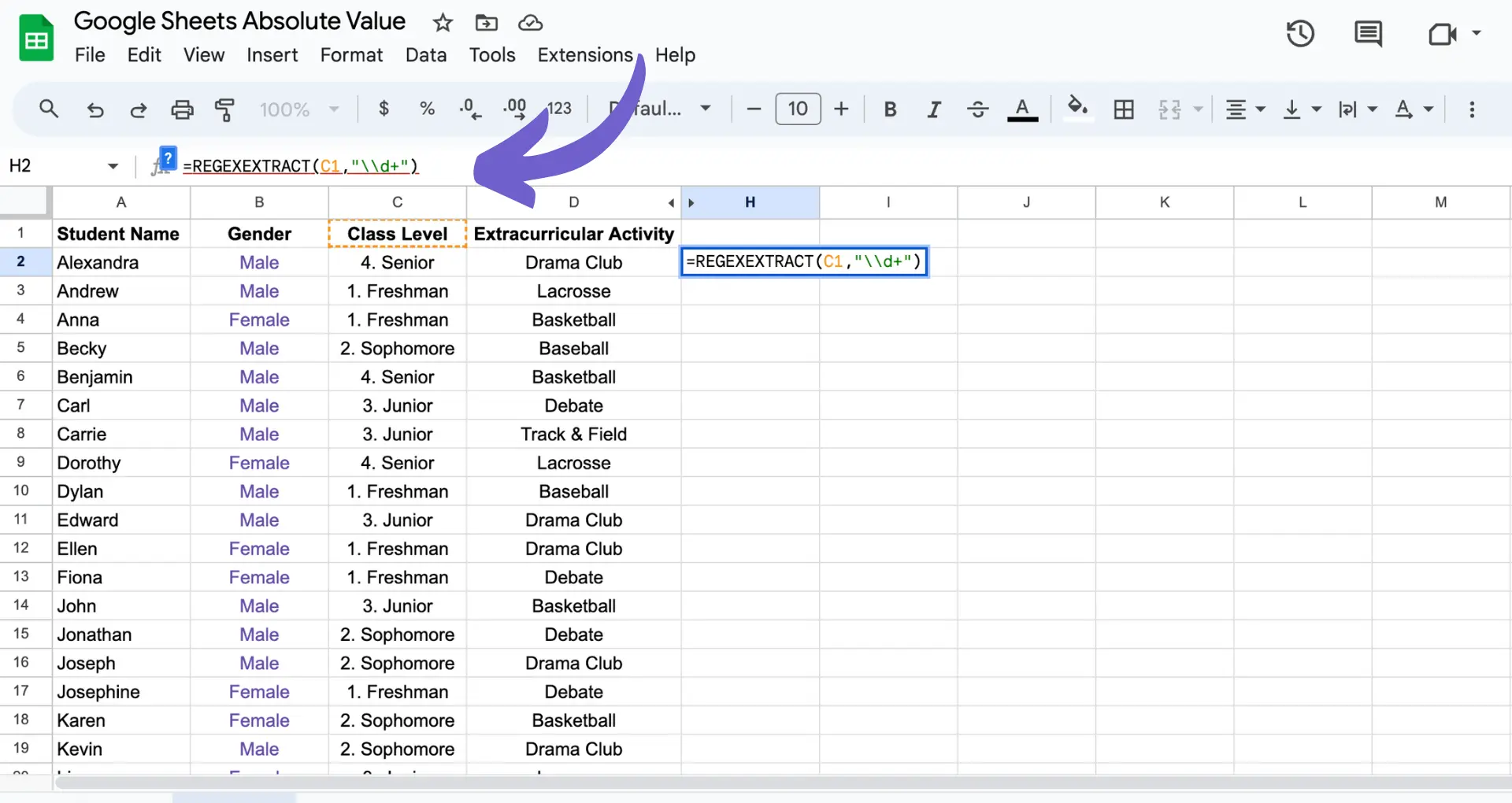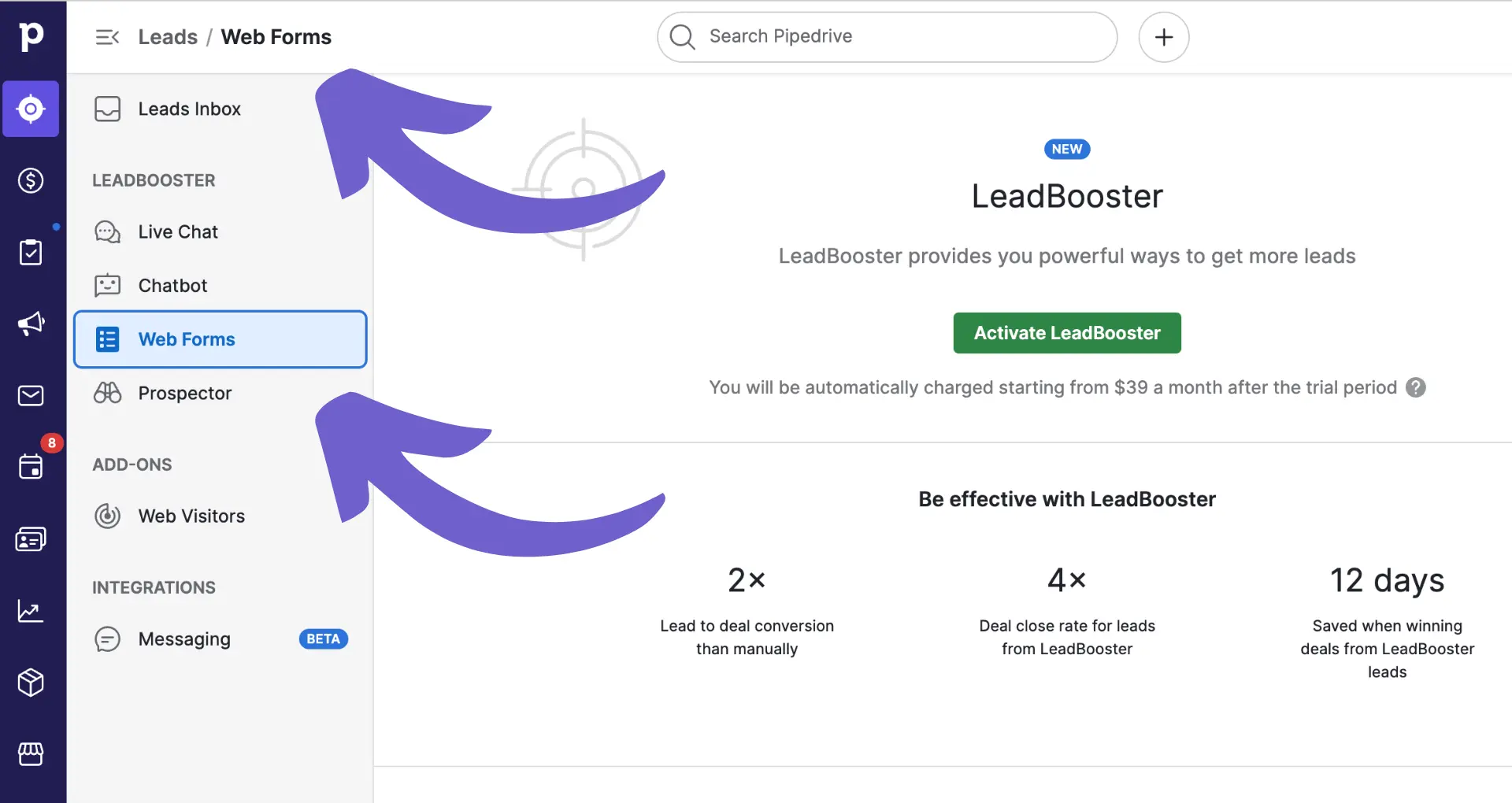





Upload your Excel file to Google Drive, then open with Google Sheets.
By the way, we're Bardeen, we build a free AI Agent for doing repetitive tasks.
If you're converting files, you might love Bardeen's conversion automation. It helps with preserving data and protections. Use it to save time and focus on important tasks.
Converting Excel files to Google Sheets is a common task for many users, but preserving data protections during the conversion process can be a challenge. In this step-by-step guide, we'll walk you through the process of converting your Excel files to Google Sheets while ensuring that your data remains protected. We'll cover everything from understanding the compatibility between Excel and Google Sheets to advanced protection techniques and automating the conversion process using Google Apps Script.
While Excel and Google Sheets share many similarities, there are fundamental differences in their functionalities and user interfaces that can affect data integrity during conversion. Some key differences include:
Understanding these differences is crucial when converting Excel files to Google Sheets, as they can impact the accuracy and functionality of your data. To minimize issues, it's important to review your spreadsheets for unsupported features and formulas before converting and to test the converted file thoroughly to ensure data integrity is maintained. For more advanced options, you can integrate Microsoft Excel with other tools.

To convert an Excel file to Google Sheets, follow these steps:

During the conversion process, you may encounter some common issues, such as:
If you encounter any issues during the conversion process, try opening the Excel file directly in Google Sheets and reviewing each sheet individually to identify and resolve any problems. For more advanced features, you can bring AI into your spreadsheet with Bardeen's GPT in Spreadsheets tool.
Save time by automating data tasks. Use Bardeen to integrate Google Sheets with your favorite apps and automate repetitive work.

When converting an Excel file to Google Sheets, it's essential to ensure that formatting and formulas are retained. Here are some tips to help preserve your work:
For specific examples, like conditional formatting and complex formulas, you may need to make some adjustments:
By taking the time to review and adjust your formatting and formulas after converting to Google Sheets, you can ensure that your data remains accurate and visually consistent. Consider using tools to connect Google Docs and enhance your workflow.
Data protection is crucial when working with sensitive information in spreadsheets. While Excel and Google Sheets both offer protection features, they differ in their implementation. Here's how to protect your data in Google Sheets:

To view protected cells, go to the "View" menu and select "Protected ranges." A striped background will appear over the protected cells.
Keep in mind that sheet protection in Google Sheets is not the same as hiding sheets. Hidden sheets can be unhidden by any editor, while protected sheets and ranges can only be edited by authorized users.
By setting up sheet and range protections in Google Sheets, you can ensure that your data remains secure and prevent unauthorized changes to your spreadsheets. For more seamless file management, consider integrating Google Drive with other apps.
Automate your tasks even further with Bardeen. Save time and improve efficiency by integrating Google Drive with other apps. Let Bardeen handle repetitive tasks for you.

While Google Sheets offers basic protection features, there are more advanced methods to secure your data:
However, it's important to note that Google Sheets' protection features have some limitations compared to Excel:
To work around these limitations, you can:
By combining Google Sheets' built-in protection features with advanced techniques like scripting and data validation, you can create a more secure environment for your sensitive data.
If you need to convert multiple Excel files to Google Sheets regularly, you can automate the process using Google Apps Script. This powerful tool allows you to write custom scripts that interact with Google Workspace applications, including Google Sheets.
To get started, open the Google Sheets file where you want the converted data to be stored and follow these steps:

Here's a basic example of what your script might look like:
function convertExcelToSheets() { var excelFiles = DriveApp.getFilesByType(MimeType.MICROSOFT_EXCEL); while (excelFiles.hasNext()) { var excelFile = excelFiles.next(); var sheetName = excelFile.getName().replace(/\.xlsx?$/, ''); var sheet = SpreadsheetApp.create(sheetName); var csvData = excelFile.getBlob().getDataAsString(); var csvUrl = 'data:text/csv;base64,' + Utilities.base64Encode(csvData); var importOptions = { contentType: 'CSV', importLocation: 'A1' }; sheet.getSheets()[0].setName(sheetName); Drive.Files.insert({ title: sheetName, mimeType: MimeType.GOOGLE_SHEETS, parents: [{id: 'FOLDER_ID'}] }, sheet.getBlob()); DriveApp.getFileById(excelFile.getId()).setTrashed(true); } }
This script searches your Google Drive for Excel files, converts each one to a Google Sheets file with the same name, and moves the converted file to a specified folder (replace 'FOLDER_ID' with the actual ID of the folder where you want the converted files to be stored). The original Excel files are then moved to the trash.
By automating the conversion process with Google Apps Script, you can save time and automate repetitive tasks when migrating data from Excel to Google Sheets. Plus, you can easily customize the script to apply specific formatting or protection settings to the converted files, making it a versatile solution for your data management needs.
Save more time by using AI web scraping tools from Bardeen. Automate tasks across your apps and focus on important work.
When converting Excel files to Google Sheets, there are several common issues that you may encounter. Being aware of these pitfalls and knowing how to avoid them can save you time and ensure a smooth transition.
One of the most frequent problems is the loss of data during the conversion process. This can happen if your Excel file contains features that are not supported by Google Sheets, such as certain complex formulas or macros. To minimize the risk of data loss, review your Excel file before converting it and simplify any formulas or remove unsupported features.
Another common issue is broken links. If your Excel file contains external links to other files or web pages, these links may not work properly after the conversion. To avoid this, update the links in your Excel file to use absolute paths or URLs before converting it to Google Sheets.
Formatting issues can also arise during the conversion process. While Google Sheets supports many of the same formatting options as Excel, some advanced formatting may not transfer correctly. To ensure your formatting is preserved, keep it simple and use standard formatting options whenever possible.
Finally, be aware that some advanced features, such as pivot tables and charts, may not function the same way in Google Sheets as they do in Excel. Before converting your file, consider whether these features are essential to your workflow and if there are alternative ways to achieve the same results in Google Sheets.
By taking the time to prepare your Excel file and understanding the limitations of Google Sheets, you can avoid common pitfalls and ensure a successful conversion. For more advanced data management, consider using tools to scrape data from websites and integrate into your sheets.











SOC 2 Type II, GDPR and CASA Tier 2 and 3 certified — so you can automate with confidence at any scale.
Bardeen is an automation and workflow platform designed to help GTM teams eliminate manual tasks and streamline processes. It connects and integrates with your favorite tools, enabling you to automate repetitive workflows, manage data across systems, and enhance collaboration.
Bardeen acts as a bridge to enhance and automate workflows. It can reduce your reliance on tools focused on data entry and CRM updating, lead generation and outreach, reporting and analytics, and communication and follow-ups.
Bardeen is ideal for GTM teams across various roles including Sales (SDRs, AEs), Customer Success (CSMs), Revenue Operations, Sales Engineering, and Sales Leadership.
Bardeen integrates broadly with CRMs, communication platforms, lead generation tools, project and task management tools, and customer success tools. These integrations connect workflows and ensure data flows smoothly across systems.
Bardeen supports a wide variety of use cases across different teams, such as:
Sales: Automating lead discovery, enrichment and outreach sequences. Tracking account activity and nurturing target accounts.
Customer Success: Preparing for customer meetings, analyzing engagement metrics, and managing renewals.
Revenue Operations: Monitoring lead status, ensuring data accuracy, and generating detailed activity summaries.
Sales Leadership: Creating competitive analysis reports, monitoring pipeline health, and generating daily/weekly team performance summaries.